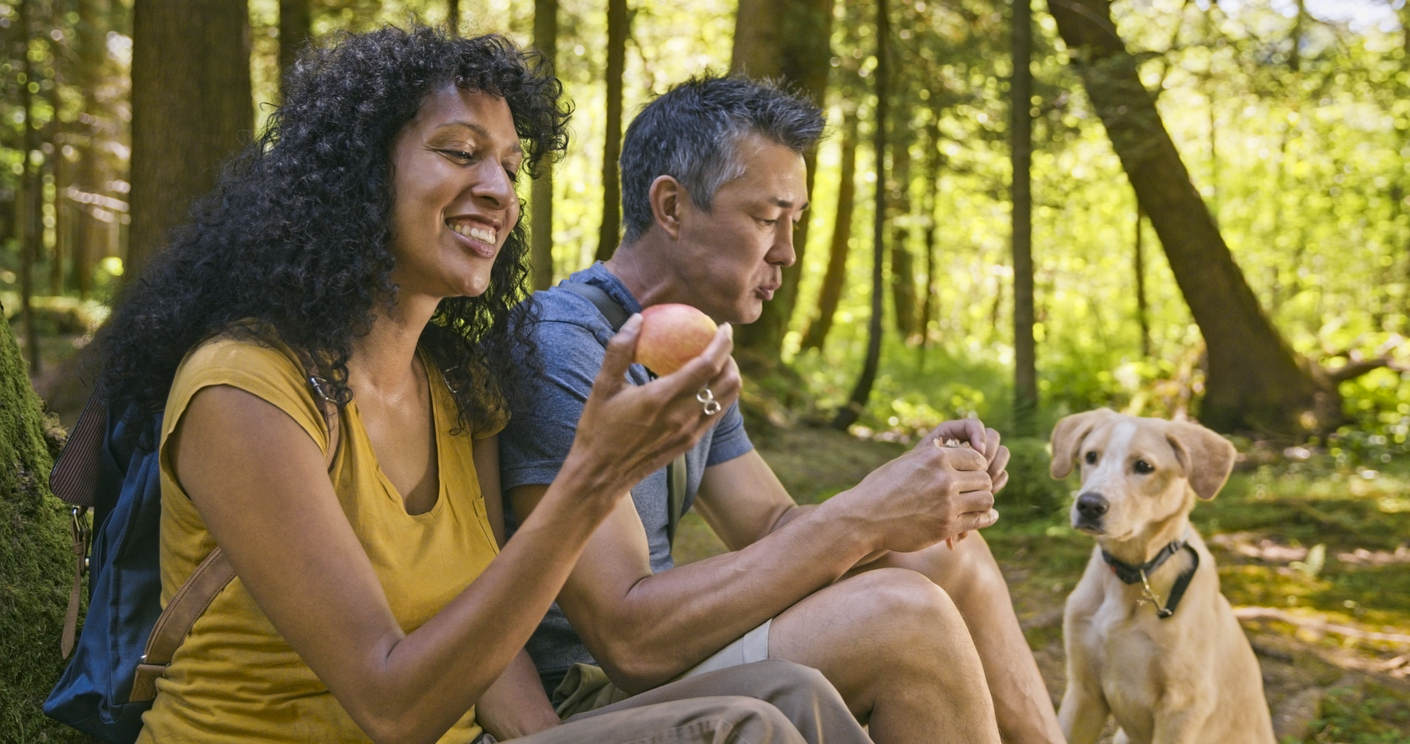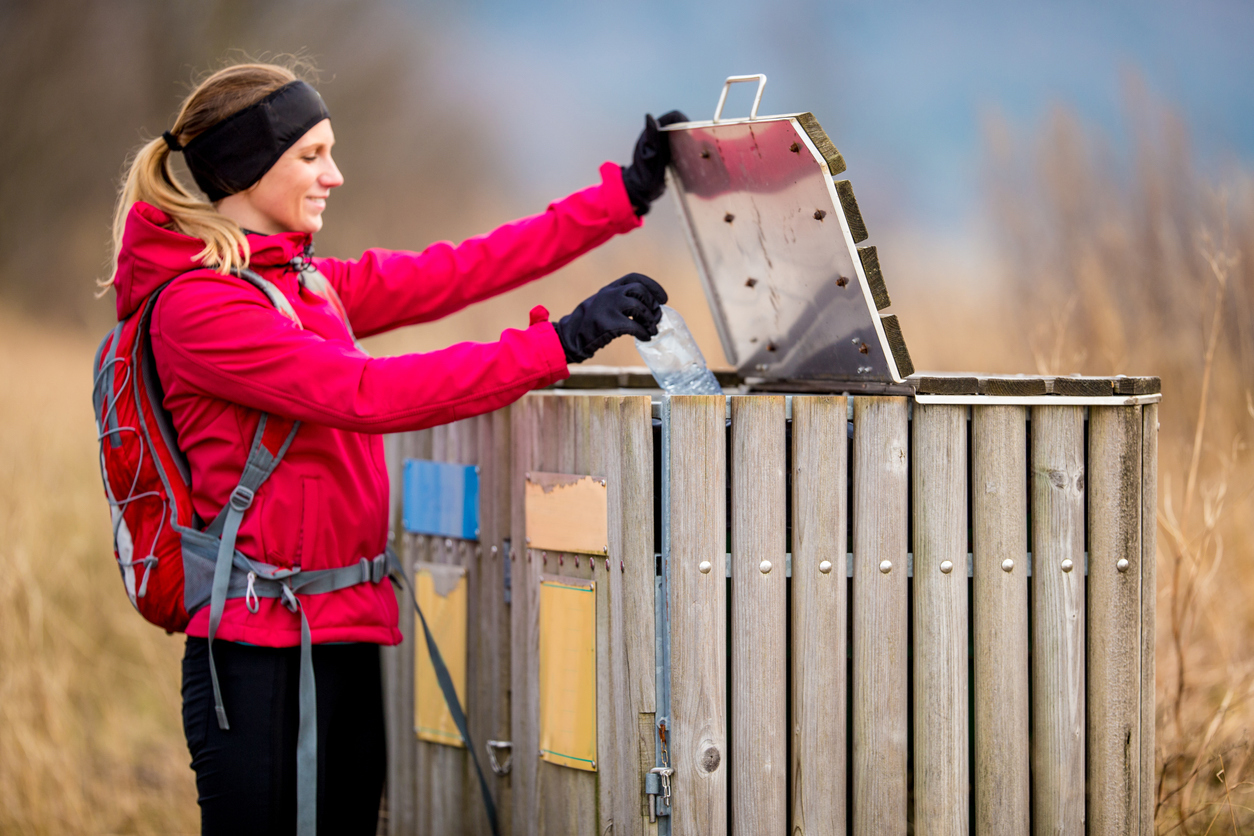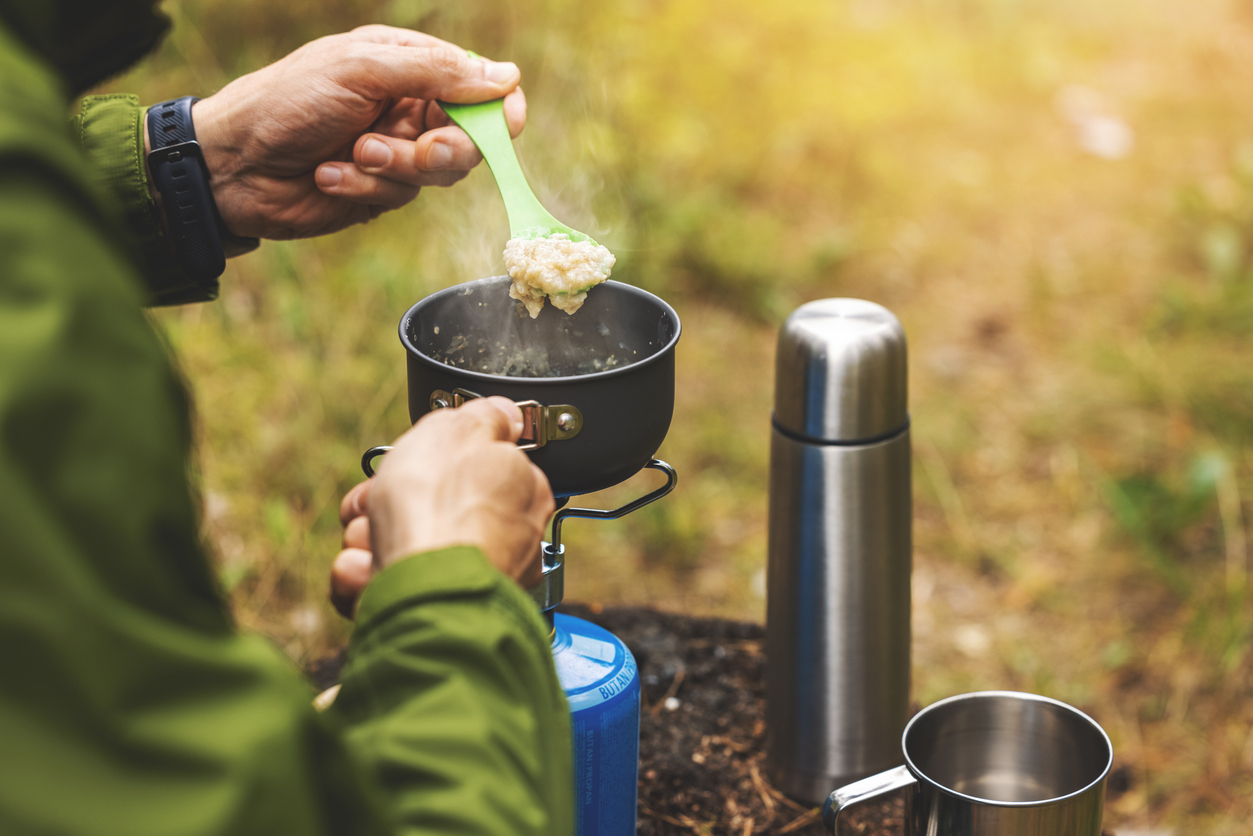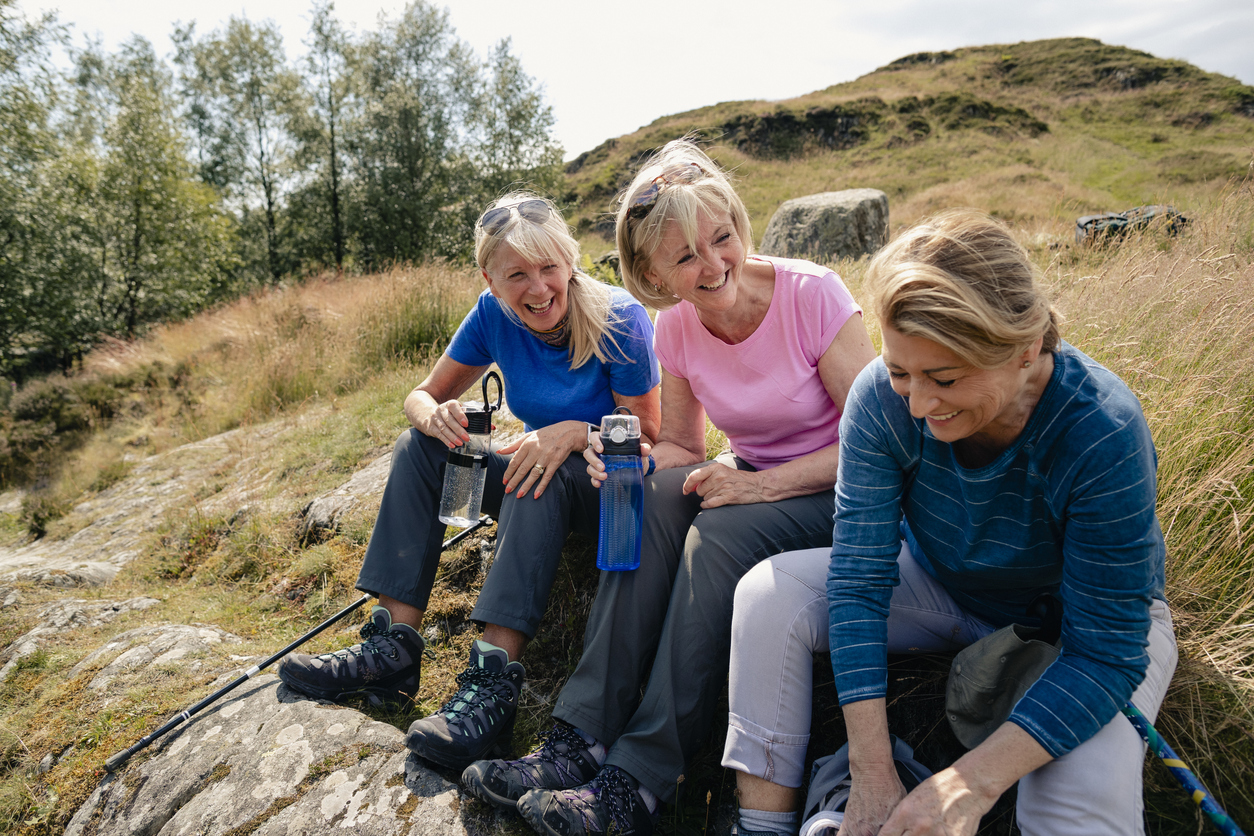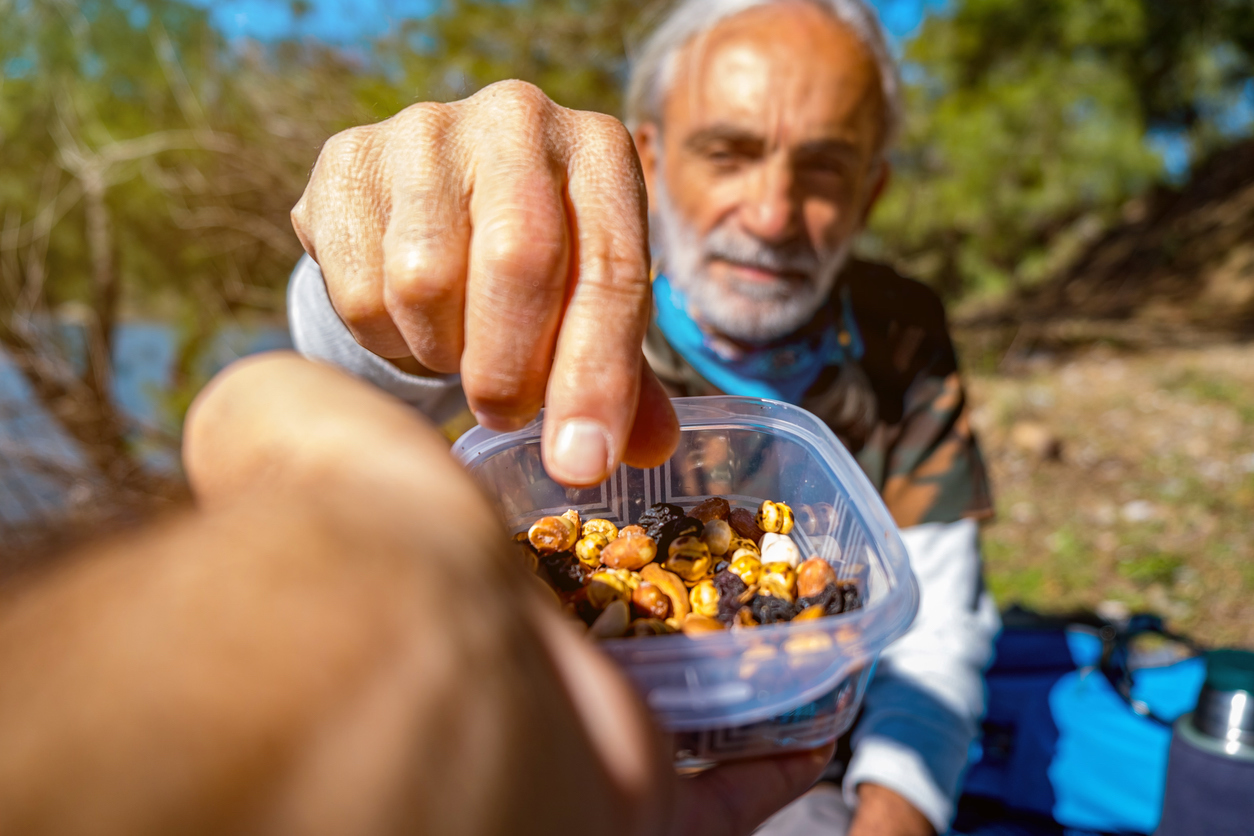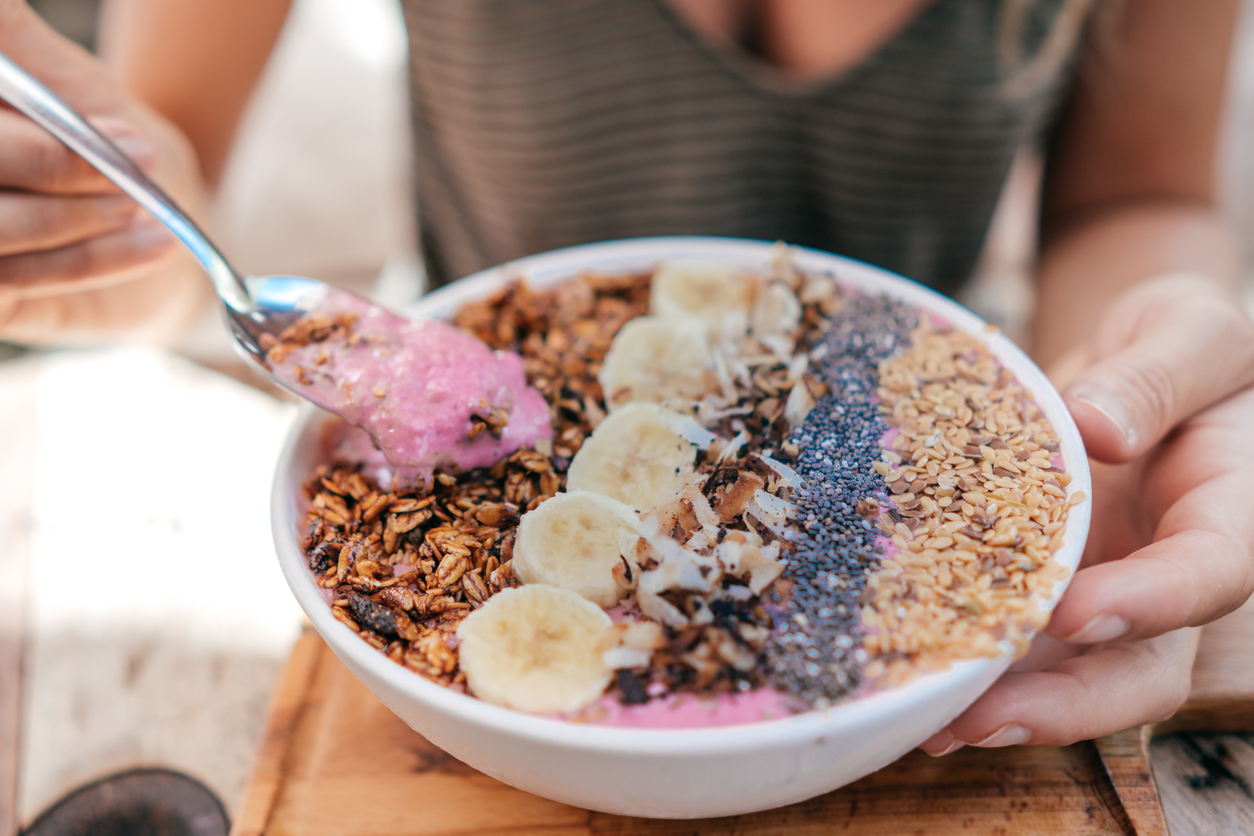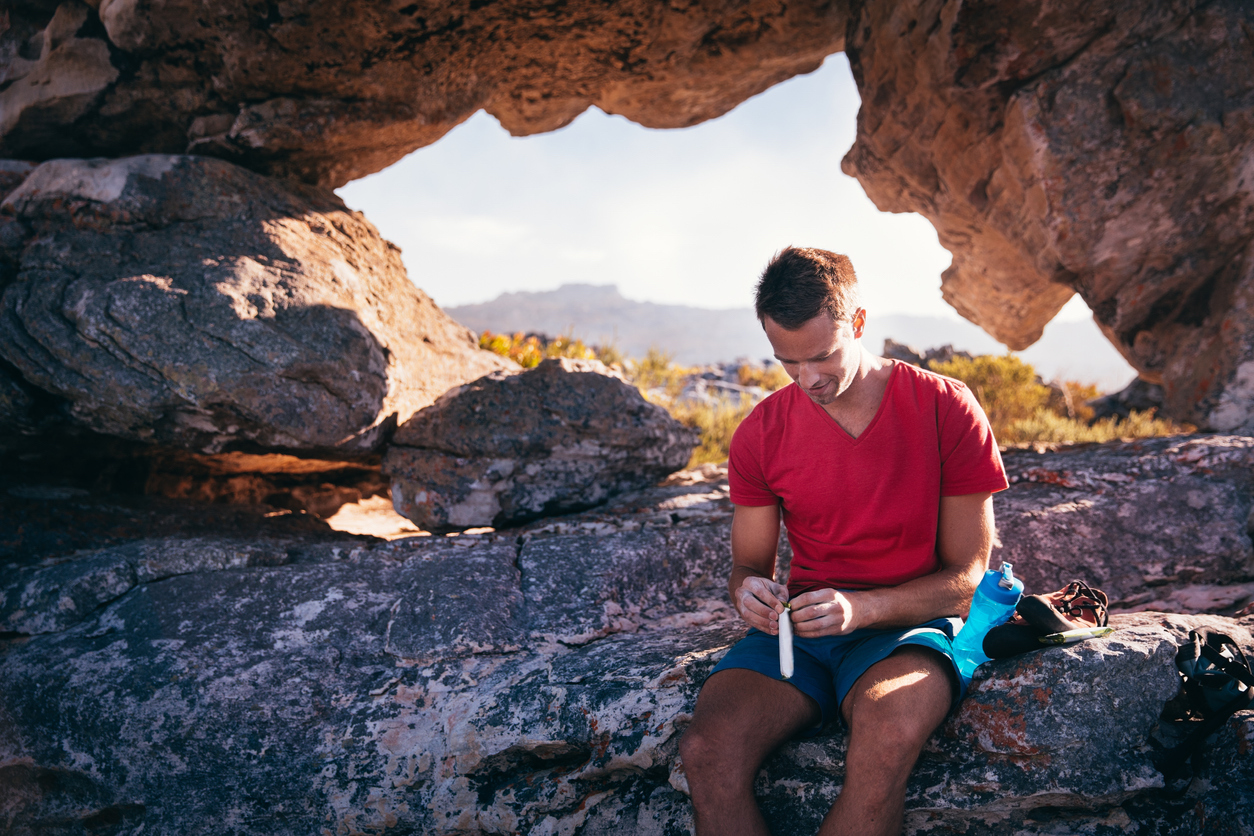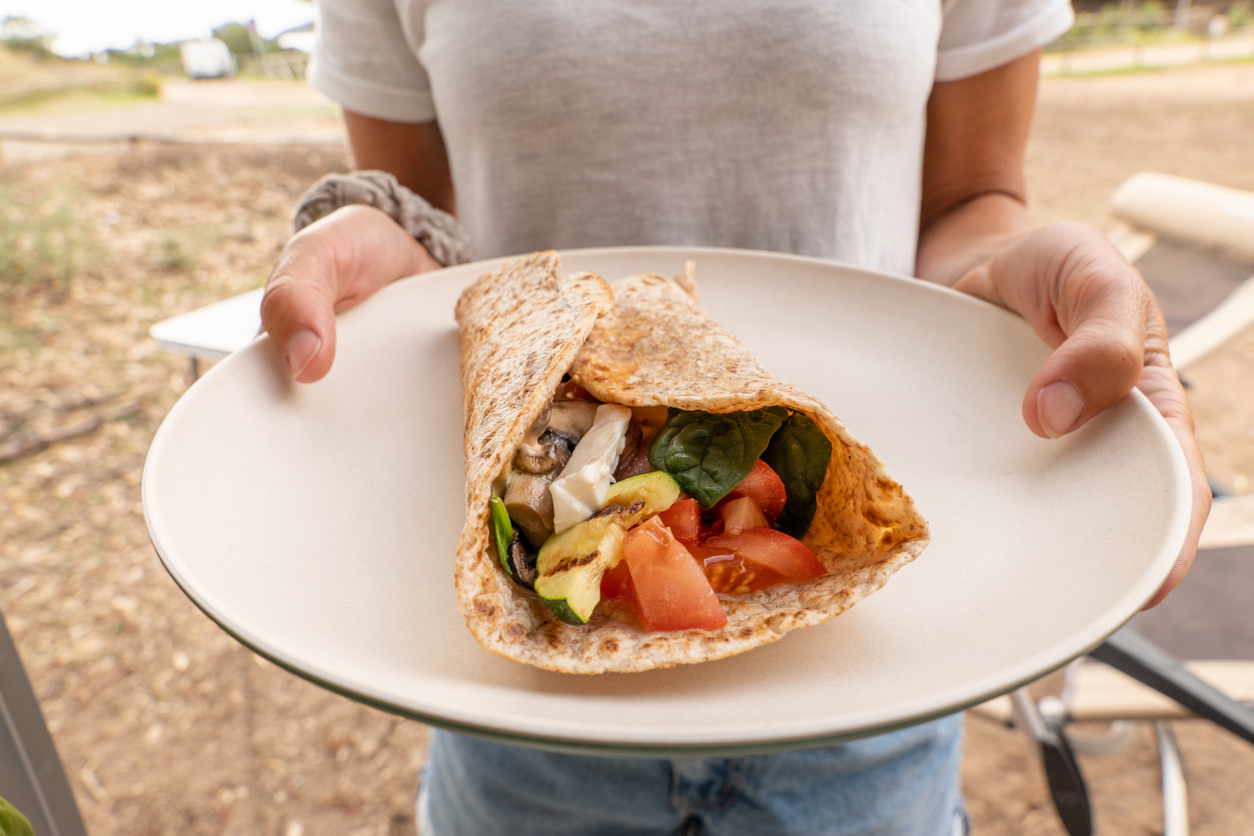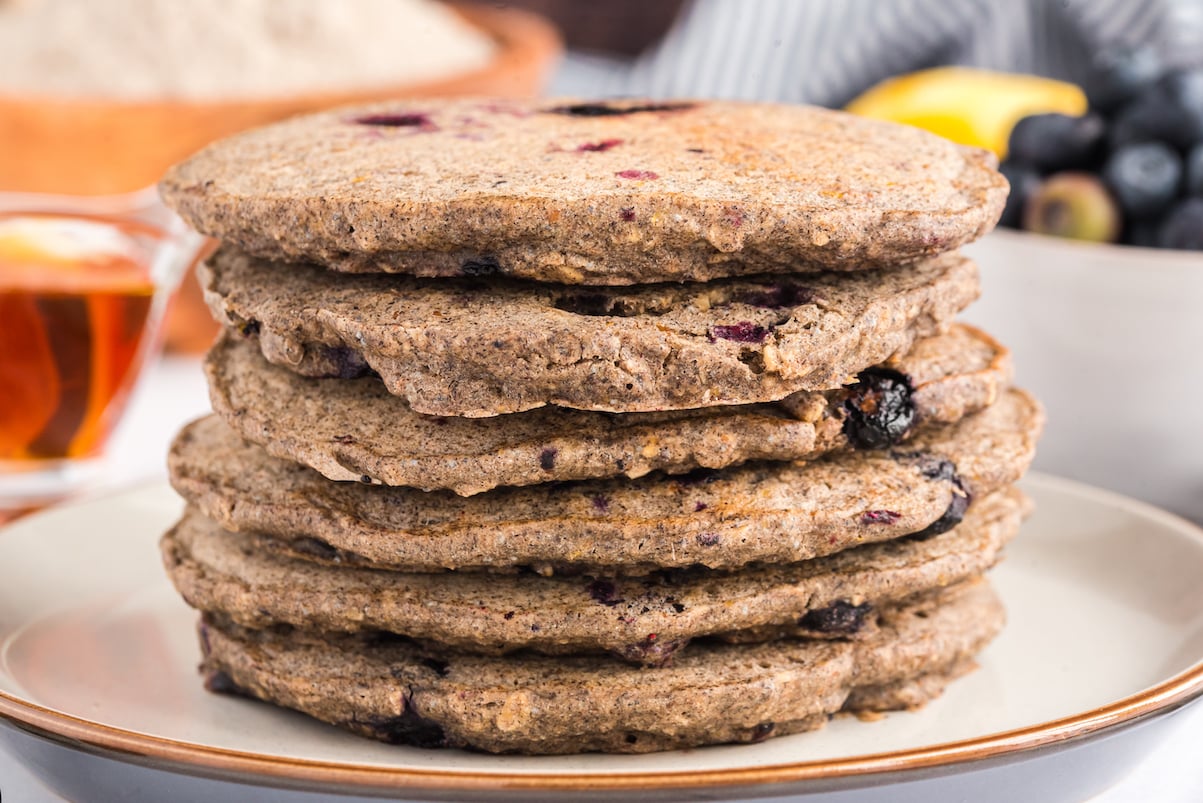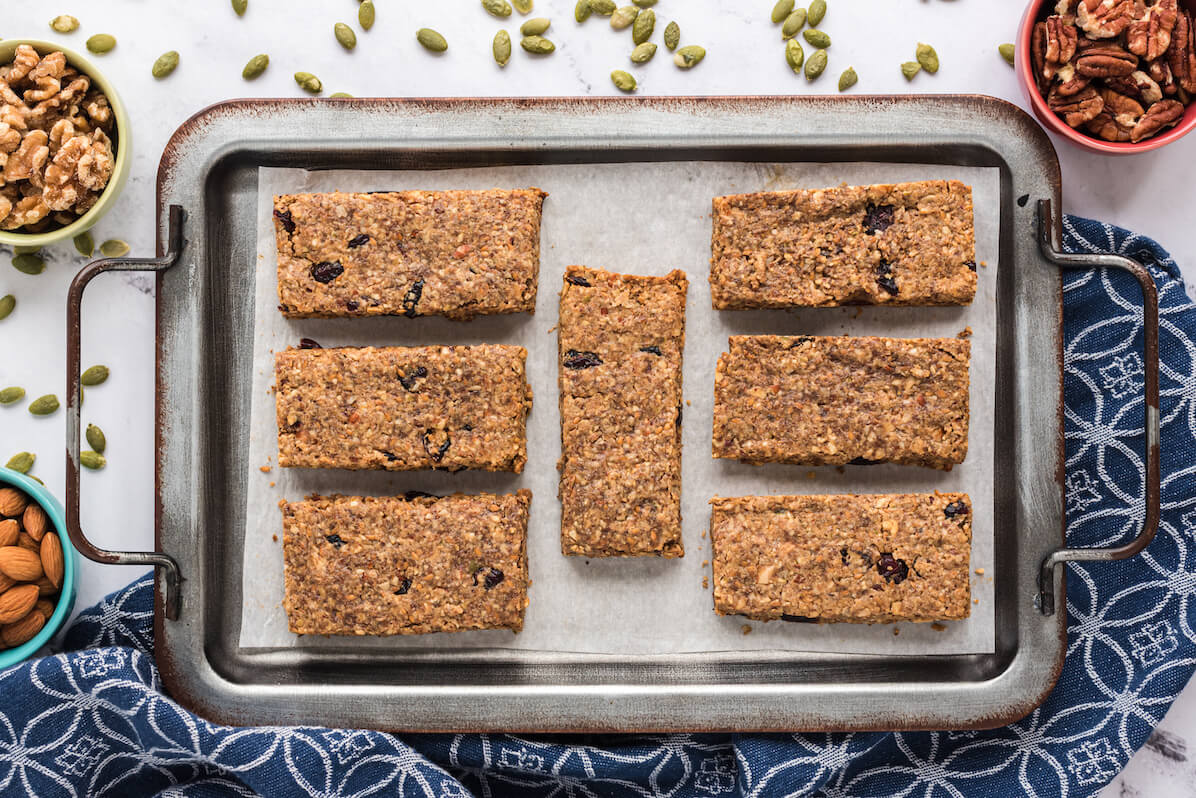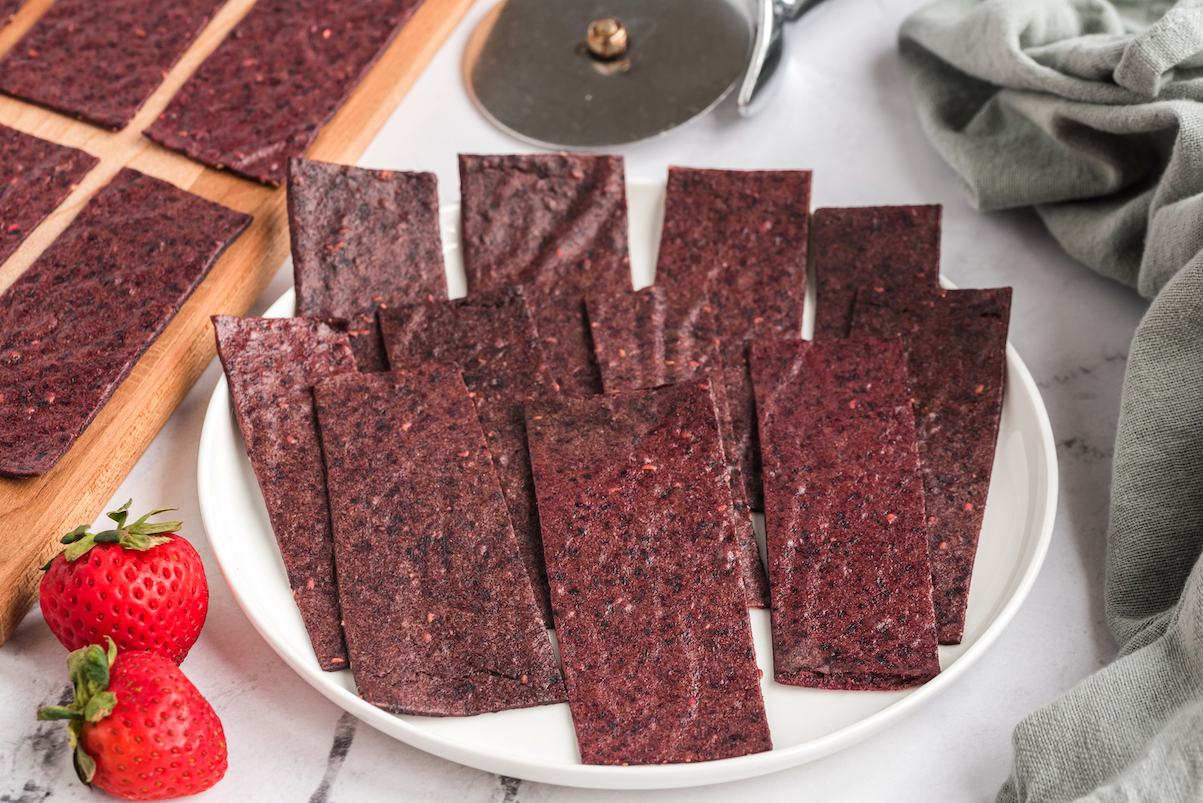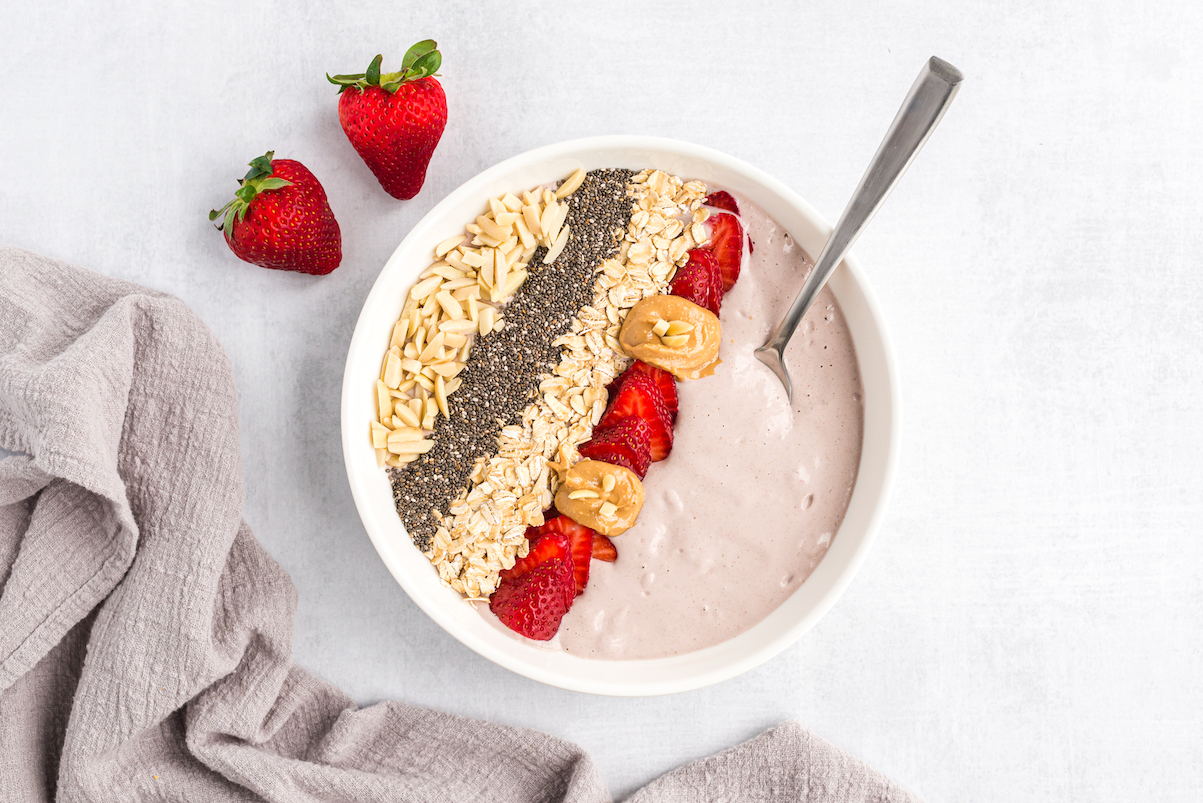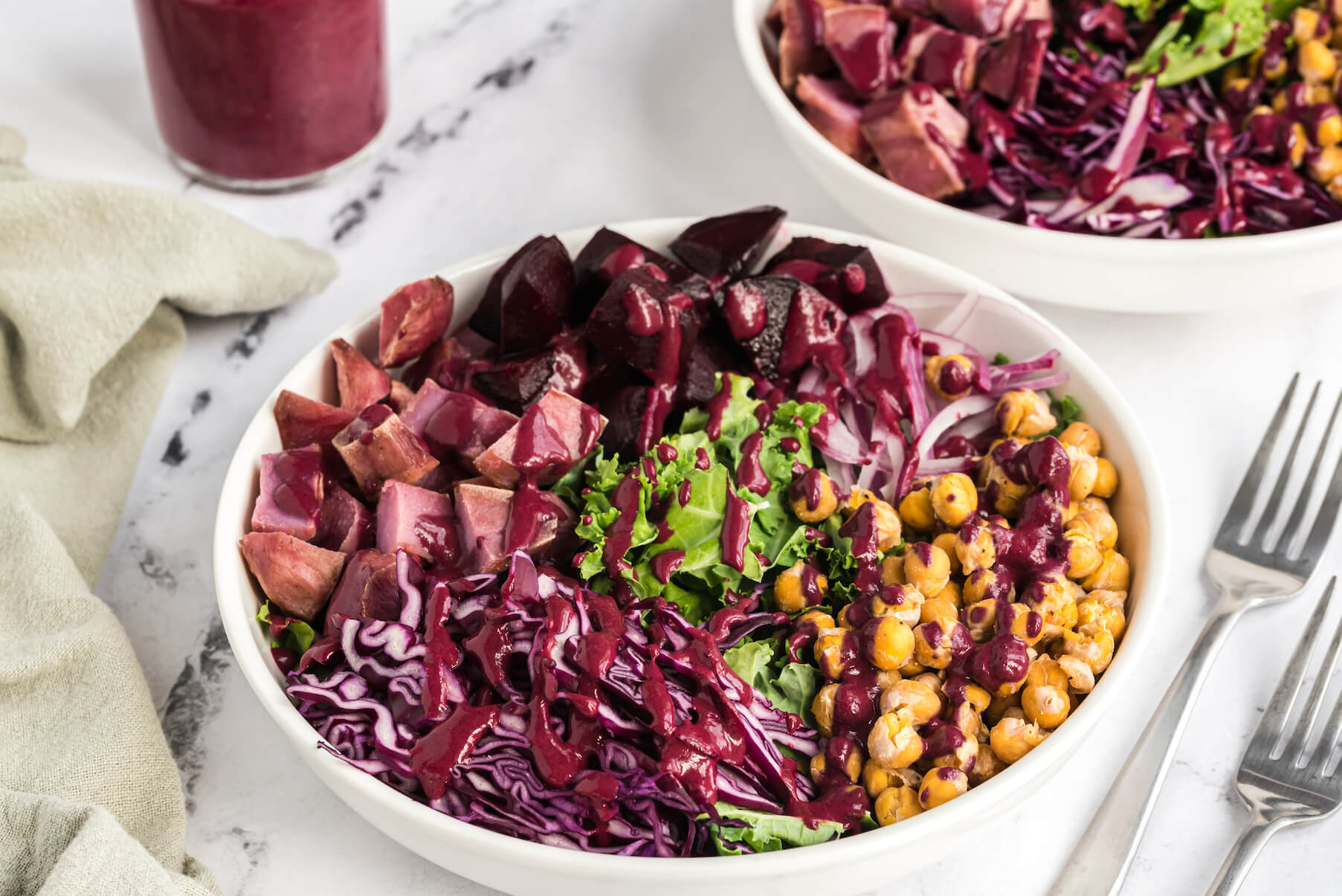You can’t stop an idea whose time has come. In the 17th century, Isaac Newton and Gottfried Wilhelm Leibniz invented calculus roughly simultaneously, even though neither was aware of the other’s work. Carl Wilhelm Scheele, Joseph Priestley (not to be confused with Jason Priestley), Antoine Lavoisier, and others independently discovered oxygen in the 18th century. And in the 1800s, Charles Darwin and Alfred Russel Wallace both came up with the theory of evolution and didn’t know of each other until both had published.
But in the last third of the 20th century, the big question was, who invented trail mix?
The Origins of Trail Mix
In the late 1960s, two different companies claimed to have invented trail mix. Harmony Foods filed a patent application in 1968 for a blend of dried fruit, nuts, and seeds for hikers. And California-based Hadley Fruit Orchards claims to have originated the “widely imitated” trail mix to sell to hikers in the nearby San Jacinto mountains.
In my attempt to get to the bottom of the mystery, I conducted extensive research, which consisted of 15 minutes of Googling. What I discovered, I’m certain, will throw the entire field of trail-mixology into turmoil.
It turns out that humans have been making nourishing, travel-worthy food mixes for, well, as long as there have been humans. Horace Kephart wrote about the beneficial weight-to-energy ratio of nuts, nut butters, and dried fruit in his 1906 classic page-turner, Camping and Woodcraft.
And I can just picture a brainstorming meeting conducted by a bunch of our paleolithic ancestors, storyboarding their creative ideas on the cave walls of Lascaux or Leang Lompoa. Perhaps they grunted “Eureka” as they grabbed a handful of nuts and dried berries to fuel themselves for a long day of gathering and hunting.
Whatever its origins, trail mix and other hiking foods are here to stay. And a few handfuls of GORP — “good old raisins and peanuts,” “granola, oats, raisins, and peanuts,” or not an acronym at all but an archaic term meaning “to eat greedily” (as in “Did you see him gorp that banana?”) — have sustained many a day hiker looking to pack maximum calories with a minimum of bulk and weight.
But there’s so much more to trekking and hiking food than trail mix. What about multiday hikes? What about enjoying a variety of foods? And how about including fresh foods, especially fruits and vegetables loaded with phytonutrients that can help our bodies heal and rebuild after a strenuous day on the trail? Can we find hiking food that not only nourishes our bodies but also protects and respects the environment?
Why Hiking Food?
Hiking is a popular outdoor activity. And why not? Not only is walking in nature great for your physical health, but research also shows that connection to and enjoyment of the natural world has profound mental, emotional, and spiritual benefits as well.
According to people who like to count things for a living, US interest in hiking has been increasing steadily, with almost twice as many people engaging in it in 2020 as in 2006. It grew even more popular during the COVID-19 pandemic as people looked for outdoor activities that were less likely to spread pathogens.
From a public health perspective, that’s a good thing. The more people who hike, the lower our rates of obesity and lifestyle-induced illness will be, and, hopefully, the more of us will care for and protect the natural world.
Healthy and Sustainable Foods for Hiking
Traditionally, hiking food suggestions included plenty of animal products, such as hard-boiled eggs and beef jerky. Back in the day, this made some sense; they didn’t spoil easily, their high-fat content meant they provided lots of energy in a small and light package, and they could be eaten while walking without requiring cooking or utensils. You could just gorp them down.
But given the negative environmental and health impacts of conventional animal products, bringing them on a hike undermines some of the most important goals of hiking.
So in the interest of a healthy society that honors nature, I want to talk about how to eat and drink in a way that makes hiking even more enjoyable, healthy, and respectful of the environment. Whether you’re going for a short hike before work or on the weekend, an all-day hike, or a multiday hike, you’ll discover how to fuel your body with the nutrition and hydration it needs.
We’ll cover:
- How much food and water to bring with you on a hike
- Why and how to abide by “Leave No Trace” principles when eating during a hike
- What kind of food to eat before, during, and after a hike
- What kinds of plant-based trail foods are out there
And while I may not be able to settle the raging debate over who gets the credit for inventing trail mix, I’ll share some recipes that you can definitely take credit for making when you share them before, during, or after your next hike.
Leave No Trace with Trail Food & Drinks
Before we get to the details, let’s talk principles. Specifically, the seven principles of Leave No Trace, a set of outdoor ethics that tells us to leave the natural world more or less as we found it. After all, popular hiking spots are popular for a reason. And the cumulative effects of human presence can diminish their charm, as anyone who’s made a pilgrimage to the remote Galapagos Islands and was visually assaulted by the vista of high-rise buildings, hotels, and restaurants can attest.
The seven principles of Leave No Trace are:
- Plan ahead and prepare
- Travel and camp on durable surfaces
- Dispose of waste properly
- Leave what you find
- Minimize campfire impacts
- Respect wildlife
- Be considerate of other visitors
Four of these principles — planning, waste disposal, leaving what you find, and minimizing campfire impacts — are particularly relevant when you are packing food for a hike.
Plan Ahead and Prepare
Before packing food for backpacking, consider your needs. How long will you be hiking? Make sure you take enough food and water (if you can’t drink the water where you’re going) to get you through the entire hike — with some extra in case of unforeseen circumstances. If you’re hiking out and back, remember to pack for a round trip.
If you’ll be spending nights on the trail, plan one-pot (or one-container) meals to minimize the number of things you’ll have to pack and decrease the garbage you’ll produce. Quick-cooking foods can also cut down on preparation time.
Dispose of waste properly
Leave nothing behind after you’ve eaten on a trail. Take all trash or recycling out with you, or dispose of it in designated receptacles at trailheads and picnic areas. While your carrot ends and apple cores will biodegrade, save them and bring them home for your compost. Don’t leave them for wildlife (or worse, feed them directly).
To minimize plastic bottle waste, take bottles home to recycle. Or even better, skip the single-use plastics entirely by bringing a reusable water bottle, hydration pack, water reservoir, or for longer hikes where there’s a natural water source you can refill at, a water bottle with a filter.
Leave What You Find
While pretty much all of nature is edible to someone, that doesn’t mean we should look at our favorite forest or meadow as a free-to-all buffet. Experienced hikers and campers may enjoy an occasional edible plant, but only when they’re absolutely certain they know what they’re eating. Don’t even think about nibbling on that leaf or berry (or mushroom!) if you can’t confidently identify it.
Also, be careful not to consume plants that are rare, slow to reproduce, or whose nutrients are critical for other species that share the ecosystem. In short, if you’re unsure, let it be.
Minimize Campfire Impacts
While campfires conjure romantic images of “roughing it” (especially if you’re a fan of Mel Brooks’ Blazing Saddles), lots of people burning lots of wood in a small area can cause significant harm. Don’t chop down limbs and branches of living trees or shrubs; use only dead wood that you find on the ground.
You’ll also want to take care to make sure your fire doesn’t get out of control. If possible, use an existing fire ring at a campsite where flames won’t spread and cause damage. Keep the fire small, and burn it only for the time you are using it. Allow wood to burn completely to ash, and put out fires with water, not dirt.
Even better than a wood fire is cooking on a portable camp stove. That way, you can leave the dead wood to rot on the ground, where it can provide habitat and food for the little critters that keep the ecosystem balanced and healthy.
Hiking Hydration
Most people are much better at recognizing hunger than thirst. That’s why it’s crucial to pay attention to your hydration when you’re out on the trail. Dehydration is not only physically taxing and potentially dangerous, it can also cloud your perceptions and impair your cognitive abilities. And the last place you want to become loopy and irrational is on a hiking trail where missing a sign could get you very, very lost. According to researcher Andy Galpin, a 2% loss in body weight due to dehydration can lead to a 10% decline in physical and cognitive performance.
Prevent dehydration by drinking 16–24 ounces of water in the hour before you hit the trail. (Hopefully, the parking area has a restroom or porta-potty; otherwise, I hope you’re OK peeing in the woods.) During the hike, it’s best to sip water slowly. An ideal range of consumption is eight ounces every 30–60 minutes.
Hiking hydration needs will vary based on temperature, clothing, altitude, and intensity. The hotter it is, the more your clothes wick moisture away from your body; the higher the elevation, and the harder you work, the more liquid you’ll need.
You need about a quart of liquid every two hours on a hike. For more strenuous hikes, or those where you’re perspiring or breathing heavily with exertion, go for the upper end, or even higher.
Oh, and when you perspire, you’re not just losing water; you’re also losing minerals. On those sweaty hikes, you will need to replenish your electrolytes as well. You can do this with the aid of an electrolyte powder mixed with water, a drink that naturally includes some electrolytes (such as fruit juice or coconut water), or salty snacks. If you have nothing else at hand, you can make an electrolyte drink by adding a pinch of salt and sweetener to your water bottle.
You can assess your hydration status by paying attention both to your thirst and the color of your urine. If you don’t feel an urge to drink and your urine is light yellow to clear, then you are probably hydrated enough.
Hiking Hydration Equipment
If you will be bringing your own hydration on your hike, you have several options. Hydration packs are basically backpacks with a dedicated “bladder” for storing water. Because water is so heavy, a backpack is a good way to bring a large amount without tiring out your arms.
For shorter hikes, a water bottle that you carry or clip to your daypack with a carabiner might be all you need. If you’re planning on jogging or running on your hike, you don’t want lots of water sloshing all over the place. In that case, check out hydration belts and hydration vests, which contain pockets for storing water bottles that minimize annoying bouncing.
Another option — one that will be crucial for multi-day hikes — is to get your water from a natural source on your journey. Unless you know that a particular spring or stream has been tested for purity and lack of nasty pathogens, make sure to purify the water with a portable water treatment device. While LifeStraw is the most popular water purification brand among hikers, there are many options, such as Joypur, that you can find online or at your local outdoor adventure store.
“Safe most of the time” isn’t good enough when it comes to the potential downside of serious bacterial exposure. It’s about as reassuring as “this plane hardly ever crashes.”
Hiking Food Ideas: Protein vs Carbs
Many people’s ideas of hiking food revolve around a worry that hikers need a lot of protein. And for lots of historical and economic reasons, when people talk about protein, they’re typically talking about animal protein.
Just like the mainstream vision of a dinner plate generally including a big chunk of meat in the leading role, with starches and veggies as supporting characters, the stars of the hiker’s pantry are all-too-often things like hard-boiled eggs, beef jerky, string cheese, and other cured and processed foods of animal origin that will keep us from “wasting away” as we navigate hills, valleys, rocky trails, and stream beds.
There are a few problems with this approach. First, we know that meat and dairy can negatively impact your health. Second, animal products are much harder on the environment, requiring more land and water, creating more pollution, and emitting more greenhouse gases.
Third, our bodies’ favorite energy source is actually carbohydrates, not protein. When you’re walking many miles and challenging yourself with uneven terrain and elevation, your immediate need is for easy-to-digest calories to keep you going.
I’m not talking about what popular culture calls “carbs” — breads, cookies, crackers, and so on. I’m referring to complex carbohydrates that are found in whole plant foods, including fruits that contain simple sugars in a package that also delivers fiber and water.
That’s not to say you should avoid protein. We need some for routine bodily maintenance and slightly more for recovery from strenuous activity. But that doesn’t mean huge quantities, and it doesn’t mean you have to eat animal sources. There’s no need to go full “Rocky” and down four raw eggs in a single gulp.
Plenty of plant foods are great sources of protein that will help you recover. And those plant foods also provide energy for the hike itself because they contain — wait for it — complex carbohydrates. Plus, they’re much better sources of most nutrients and antioxidants, which can help you perform at your best. For optimal results, choose whole foods over processed or packaged foods to avoid unwanted ingredients like artificial flavorings, colorings, added sugar, and other additives.
What to Eat Before a Hike
Don’t start your hike hungry. Especially if you’re going on a strenuous and long hike, you want to get ahead of your energy requirements. Halfway up a mountain is probably not the place to practice intermittent fasting.
Begin the day with a breakfast that’s low in fat, high in complex carbohydrates (meaning they contain starch and fiber, not that they enjoy mid-20th century existential French philosophy), and contains some protein. In general, whole foods are best, thanks to their full complement of micronutrients, but you may want to dial back the fiber if you’re going on a long hike and won’t have ready access to a toilet. Of course, if pooping in the woods is your way of being one with nature, then by all means bring on the roughage! Just add a decent digging trowel to your gear, such as the aptly named “Deuce of Spades Potty Trowel” by The Tentlab.
The goal of your pre-hike meal is to provide fuel while giving your body enough time to digest most of the food before hiking. A good rule of thumb is to consume around 300–500 calories at least one hour before a serious hike.
Some breakfasts to eat before a hike include the following:
- Oatmeal with nuts or seeds and fruit
- Breakfast burrito
- Quinoa breakfast bowl
- Plant-based yogurt with homemade granola and berries
- Whole-grain pancakes or waffles with nut butter and fruit
What to Eat During a Hike
For longer hikes, eat a little bit every one to two hours instead of waiting for a large meal in the middle of the day. That way you’ll keep your energy levels high, and your body can remain in motion and limber all day. Your trail food should ideally aim for roughly the following macronutrient distribution: 45–55% carbs; 35–40% fat; and 10–15% protein. The shorter the hike, the less fat you need.
A big camp dinner is fine if you’re ready to pitch the tent and relax for the night. But you don’t want to make your body play the “let’s try to trek and digest at the exact same time” game, which at best will slow you down, and at worst will give you digestive distress that will challenge the digging capacity of an excavator, let alone a Potty Trowel.
If you’re sweating even a little, make sure to include some salty snacks to replace the sodium that’s releasing through your pores. And don’t neglect the other electrolytes that you’ll need to replenish, like magnesium, potassium, and calcium.
For hikes longer than three hours, or those in hot environments, go for nonperishable items. No one wants to deal with the black banana that got squished between the granola bar and the water bottle. While we’re on the topic, I don’t recommend just tossing your food into the same backpack compartment as the sunscreen, binoculars, and copy of 31-Day Food Revolution that you always carry. A small, soft lunch box can both protect your food from your other gear (and vice versa), and make it easier to access.
Here are some ideas for food you can eat during the hike:
- Trail mix (with nuts, seeds, and dried fruit)
- Nut butters
- Whole-grain crackers and pretzels
- Wraps and sandwiches
- Energy balls
- Granola bars
Trail Meals
Several companies make freeze-dried or dehydrated meals you can bring with you. The nice thing about many of these offerings is that they are light, since you add the water back before cooking. They do involve extra packaging that you’ll have to port out, and not all brands are healthy or environmentally friendly.
Here’s a list of some trail meal companies you may want to check out:
- LeafSide
- RightRice
- Good To-Go
- Outdoor Herbivore
- Backpacker’s Pantry
- Patagonia Provisions
- Harmony House
- Crispy Green
- Food for the Sole
- Nomad Nutrition
- Fernweh Food Co.
What to Eat After a Hike
While you don’t want to gorge yourself after visiting the gorge (English sure is a funny language), there is a 30–45-minute post-exercise window when your body is especially receptive to replenishing and repairing muscle tissue. After a hike, a 4:1 ratio of carbohydrates to protein is ideal. The carbohydrates replace lost muscle sugar and the protein provides amino acids to rebuild muscles.
Look for foods that contain both protein and complex carbs. Some examples include:
- Freeze-dried or dehydrated meals
- Protein-rich shakes
- Smoothies
- Power bowls
- Sandwiches or wraps
But wait — how are you going to make a smoothie or shake within 45 minutes of finishing a hike if your vehicle is parked at a trailhead an hour away from home? That’s where the miracle of modern technology comes in (and where I start sounding like an infomercial). Keep your fresh and frozen ingredients in a good cooler, and if you’re pulling out all the stops, consider getting a small portable blender, such as a Blendjet or Nutribullet.
For multiday hikes, aim for around 1½–2½ lbs of food per person per day. Unless your food is watermelon (which I don’t recommend), that will translate to anywhere from 2,500 to 4,500 calories, depending on the caloric density of the food. Your caloric needs will vary based on the intensity and length of your hike, your size and weight, and your basal metabolic rate (how many calories you burn just by being alive).
Vegan Hiking Meals and Camping Food Recipes
Now it’s time for five awesome recipes. The only problem is, they’re so delicious you’ll be tempted to make them and eat them right away and totally forget about hiking. I’ll make you a deal — test them out once (you know, just to make sure they’ll work on the day of the hike), and then save them for your wonderful walks, terrific treks, remarkable rambles, and excellent excursions.
With the vegan hiking meals below you’ll feel ready and energized before your hike, stay fueled and hydrated during the hike, and recover and refuel after your hike. Basically, you’ll be a hiking machine!
The Blueberry Poppyseed Pancakes use buckwheat flour, which has fiber and plant-based protein, helping to keep you sustained during your hike. Make the Peanut Butter and Cranberry Granola Bars ahead of time so you have them for times you’re running out the door for a hike, or bring them with you to stay fueled during a hike.
If your blood sugar feels a little low, and you’re needing a quick boost in sugar for energy, take a few bites of the Mixed Berry and Banana Fruit Leather (make sure to drink plenty of water with it since they’ve lost their natural hydrating properties!). Obviously, you’ll want to make these ahead of time so that you’re well prepared while on your trek.
You can also refuel with a tasty and easy-to-prepare Strawberries and Cream Smoothie Bowl that’s filled with carbohydrates, protein, and antioxidants — essentials for recovery! If you have a little more time to prepare a full meal, the Purple Powered Lunch Bowl with Crispy Chickpeas is savory, satisfying, and nourishing. Everything from your cells to your muscles to your entire body will thank you after an enduring and invigorating day!
1. Blueberry Poppyseed Pancakes
Starting the day with foods that will sustain you physically and mentally during a hike or trek is important, whether you’re an intrepid explorer or just starting out (and we’re guessing you may be one of these since you’re reading this article). Introducing Blueberry Poppyseed Pancakes! These fiber-filled and protein-packed pancakes will provide you with consistent energy throughout the morning to keep you energized and focused so you can navigate tricky terrain and steep climbs. You’ll also get vitamin C from the blueberries, which is like a natural skin protectant from the inside out (but still wear your sunscreen!). Omega-3s in the chia seeds support brain health and reduce inflammation, and calcium in the poppy seeds is essential for muscle contraction. Also important to note: These pancakes are pretty scrumptious!
2. Peanut Butter and Cranberry Granola Bars
Plan ahead a bit because these tasty and nourishing bars do require some baking. But we can emphatically say that the effort is worth it! From a culinary perspective, these Peanut Butter and Cranberry Granola Bars taste like a special treat. From a nutrition perspective, they’ll help keep you energized for hours. The combination of dried cranberries (a source of carbohydrates and antioxidants) with nuts, seeds, and nut butter (sources of fiber and protein) make these bars perfect fuel to consume before or during a hike. Bring extra if you’re hiking with friends because they’ll be asking you to share!
3. Mixed Berry and Banana Fruit Leather
Have you ever had that “bottomed out” feeling when, all of a sudden, your brain feels foggy, legs feel shaky, and you want to eat the person in front of you (figuratively speaking, obviously, since this is a plant-focused blog)? Your glycogen stores are depleted, blood sugar has dropped, and you still have two miles to go. Bringing snacks that will keep you fueled helps you avoid this scenario. Mixed Berry and Banana Fruit Leather is made with three simple ingredients — berries, bananas, and dates — all sources of simple carbohydrates to keep your muscles fueled and blood sugar steady. What’s more, these fruits are also packed with antioxidants, which will scavenge those free radicals that may cause a slow burn during a hike and soreness after a hike. Finally, these fruity treats travel really well!
4. Strawberries and Cream Smoothie Bowl
One of the splendid aspects of smoothie bowls is that you can add any toppings you’d like to the creamy base. For example, if you trekked extra long and feel the need for more carbohydrates to refuel depleted muscles and liver glycogen stores, add cubed pineapple or sliced banana on top. If you’d prefer to boost your protein intake because you worked your muscles extra hard climbing steep terrain, then opt for the nuts and seeds. The base of strawberries, cashews, plant milk, and hemp seeds provides you with a balanced base of carbohydrates, protein, fat, and fiber, making this an ideal recipe to refuel no matter which toppings you choose. It’s also simple to make, refreshing, and rejuvenating, making it a superb post-trekking delight.
5. Purple Powered Lunch Bowl with Crispy Chickpeas
This bowl is packed with purple foods, all powered with phytonutrients (that’s a lot of potent Ps!), which act as antioxidants, scavenging free radicals, reducing inflammation, and expediting recovery. Enjoying this meal after a day on the trails means you’ll be ready to conquer trails the next day (or simply be less sore if that’s your goal — that works, too!). Purple Powered Lunch Bowl with Crispy Chickpeas also has all the macronutrients you need for post-hiking recovery, including simple carbohydrates, complex carbohydrates, plant protein, and healthy fats. Finally, since kale is a hardy leafy green, it holds up well for days, even after being drizzled with dressing. Hint: If you’re looking for backpacking lunch ideas that require no cooking, make this bowl ahead of time so it’s ready and waiting for you after a long day of trekking!
Enjoy Your Healthy Hiking Food!
With a little bit of planning, you can ensure you get the food and hydration you need on a hike, while still honoring the “leave no trace” principles endorsed by nature lovers everywhere. And while animal-based hiking foods might be common, you don’t need them to sustain your energy before, during, or after a hike. In fact, the vast array of plant-based options can fuel you just fine, taste great, and improve your health rather than compromise it over time. No matter if you’re tackling the entire Appalachian Trail or just going for a stroll in a local park, you can make or buy wholesome and delicious plant-based food to support your hike.
Tell us in the comments:
- What’s your favorite healthy hiking food?
- What everyday foods and dishes can you pack for your next hike?
- Which vegan hiking food recipe will you try next?
Feature Image: iStock.com/vgajic

